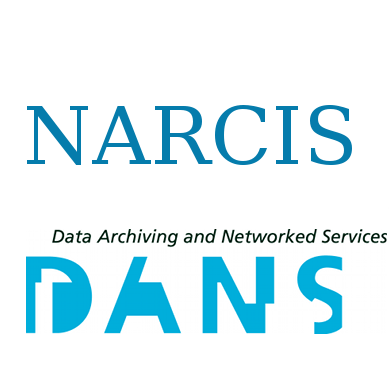Focal point
Location
National Academic Research and Collaborations Information System (NARCIS) is the main Dutch national portal for those looking for information about researchers and their work. NARCIS aggregates data from around 30 institutional repositories. Besides researchers, NARCIS is also used by students, journalists and people working in educational and government institutions as well as the business sector.
NARCIS provides access to scientific information, including (open access) publications from the repositories of all the Dutch universities, KNAW, NWO and a number of research institutes, datasets from some data archives as well as descriptions of research projects, researchers and research institutes.
This means that NARCIS cannot be used as an entry point to access complete overviews of publications of researchers (yet). However, there are more institutions that make all their scientific publications accessible via NARCIS. By doing so, it will become possible to create much more complete publication lists of researchers.
In 2004, the development of NARCIS started as a cooperation project of KNAW Research Information, NWO, VSNU and METIS, as part of the development of services within the DARE programme of SURFfoundation. This project resulted in the NARCIS portal, in which the DAREnet service was incorporated in January 2007. NARCIS has been part of DANS since 2011.
DANS - Data Archiving and Networked Services - is the Netherlands Institute for permanent access to digital research resources. DANS encourages researchers to make their digital research data and related outputs Findable, Accessible, Interoperable and Reusable.
Members:
Resources
Displaying 31 - 35 of 1863Feedback between drought and deforestation in the Amazon
Deforestation and drought are among the greatest environmental pressures on the Amazon rainforest, possibly destabilizing the forest-climate system. Deforestation in the Amazon reduces rainfall regionally, while this deforestation itself has been reported to be facilitated by droughts. Here we quantify the interactions between drought and deforestation spatially across the Amazon during the early 21st century.
The role of land administration domain model and spatial data infrastructure in improving ease of doing business in Indonesia
Land management has four functions that are interlinkage to each other: land tenure, land valuation, land use planning and land development. These functions are the foundation of Indonesia's new strategy for improving its Ease Of Doing Business (EODB), directly in dealing with construction permits and registering property. Ideally, each permit includes Rights, Restrictions, and Responsibilities (RRRs) from land management functions. However, in a decentralization, it is difficult to manage RRRs sourced from different activities and managed by multiple data custodians.
Development of 3D spatial profiles to support the full lifecycle of 3D objects
Remote Sensing for Land Administration
Land administration constitutes the socio-technical systems that govern land tenure, use, value and development within a jurisdiction. The land parcel is the fundamental unit of analysis. Each parcel has identifiable boundaries, associated rights, and linked parties. Spatial information is fundamental. It represents the boundaries between land parcels and is embedded in cadastral sketches, plans, maps and databases. The boundaries are expressed in these records using mathematical or graphical descriptions. They are also expressed physically with monuments or natural features.


